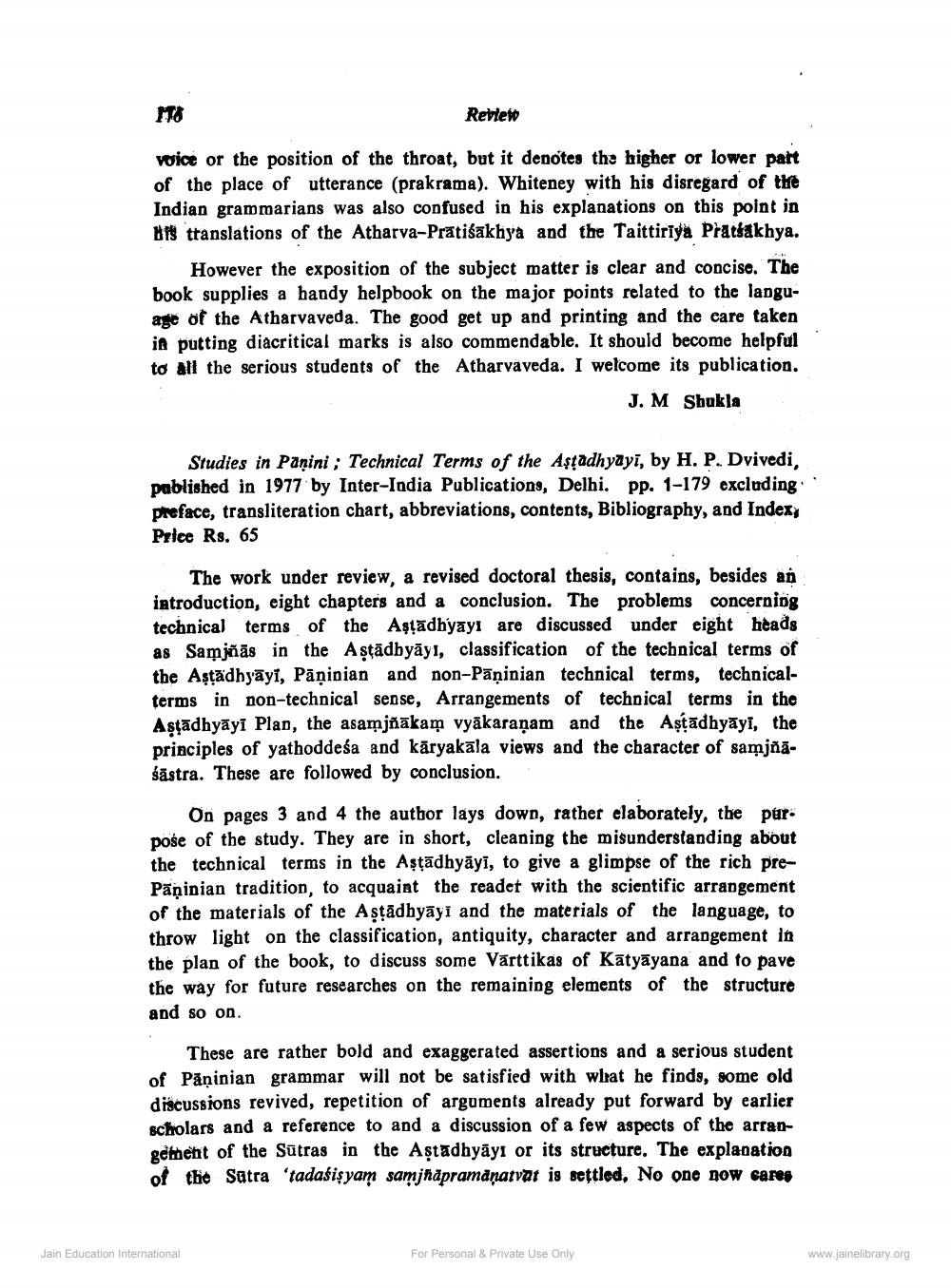________________
Repleto
voice or the position of the throat, but it denotes the higher or lower part of the place of utterance (prakrama). Whiteney with his disregard of the Indian grammarians was also confused in his explanations on this point in Bis translations of the Atharva-Prātiśākhya and the Taittiriya Pratsakhya.
However the exposition of the subject matter is clear and concise. The book supplies a handy helpbook on the major points related to the language of the Atharvaveda. The good get up and printing and the care taken in putting diacritical marks is also commendable. It should become helpful to all the serious students of the Atharvaveda. I welcome its publication.
J. M
Shukla
Studies in Panini ; Technical Terms of the Aşgadhyayi, by H. P. Dvivedi, published in 1977 by Inter-India Publications, Delhi. pp. 1-179 excluding preface, transliteration chart, abbreviations, contents, Bibliography, and Index, Price Rs. 65
The work under review, a revised doctoral thesis, contains, besides an introduction, eight chapters and a conclusion. The problems concerning technical terms of the Aşladhyayı are discussed under eight heads as Samjñās in the Aştādhyāyi, classification of the technical terms of the Aştādhyāys, Pāṇinian and non-Pāṇinian technical terms, technicalterms in non-technical sense, Arrangements of technical terms in the Astādhyāyi Plan, the asamjñākam vyākaraṇam and the Aștādhyāyi, the principles of yathoddeśa and kāryakāla views and the character of samjñā. śāstra. These are followed by conclusion.
aractebyan, the
On pages 3 and 4 the author lays down, rather elaborately, the pur. pose of the study. They are in short, cleaning the misunderstanding about the technical terms in the Aşțādhyāyī, to give a glimpse of the rich prePāṇinian tradition, to acquaint the reader with the scientific arrangement of the materials of the Astādhyāyi and the materials of the language, to throw light on the classification, antiquity, character and arrangement in the plan of the book, to discuss some Varttikas of Katyāyana and to pave the way for future researches on the remaining elements of the structure and so on.
These are rather bold and exaggerated assertions and a serious student of Pāṇinian grammar will not be satisfied with what he finds, some old discussions revived, repetition of arguments already put forward by earlier scholars and a reference to and a discussion of a few aspects of the arrangement of the Sūtras in the Aştadhyāyı or its structure. The explanation of the Satra 'tadaśisyam samjñāpramanarvat is settled. No one now cares
Jain Education International
For Personal & Private Use Only
www.jainelibrary.org




